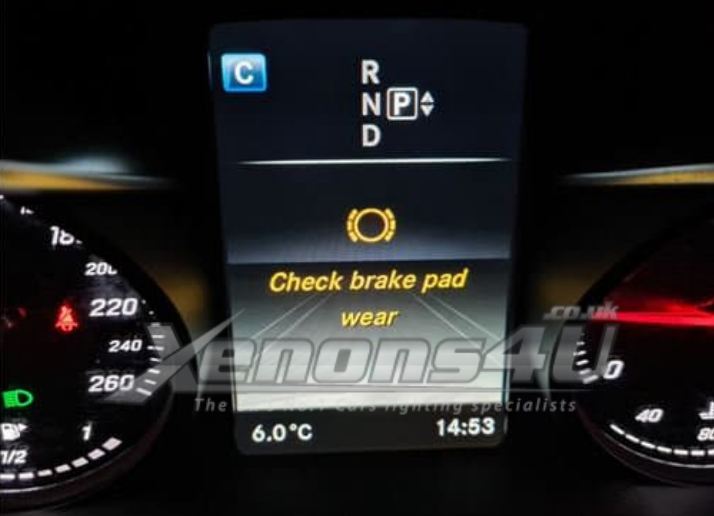
Love cruising down through the highway in your gorgeous Benz, but hate the warning signs and messages that might spoil your ride?
Well, first thing first, your Mercedes brake pads are a fundamental part of the brake system which lies between the brake shoe and the brake drum and must always be in ideal condition for the safety of both you and your car. Fortunately, Mercedes Benz has been vocal enough when it needs a brake pad replacement. There are many warning signs indicating wear of your brake pads which includes screeching and squealing sound, grinding and growling loud noise and a decent indicator light turning on with a warning message appearing on center cluster “Check brake pad wear” on your Mercedes Benz.
This indicator light is found on almost all high-end cars and has made it helpful for the owner to get information well before time when the brake pads are completely worn out and result in any further damage which simply means when this indicator light is turned ON, the sensor in brakes has found the thickness of brake pads less than required.
Why does this message appear?
You may wonder initially what triggered this message on your cluster screen but the fact is quite obvious that your current brake pads have reached their limit and need replacement. Over time, brake pads may wear down naturally. The more you drive, the more brakes are used, which means the brake pads become thinner and thinner with the time until they need replacement once reaching its limit.
Diagnosis of thin brake pad
Your Mercedes Benz may warn you with an indicator light that it’s time to check your brake pads but it may not warn you which one from front or rear brake pad has gone weary; so you must inspect it thoroughly for the correct faulty brake pad before going into replacement.
Auto manufacturers have made the diagnosis possible in two ways:
- A small sensor is embedded into the brake pad material itself so when the pad becomes thin and comes into contact with the rotor in sensor to complete a circuit, this indicator light turns ON.
- A position sensor to measure the movement of pads, before the brakes are applied. This sensor determines how much the pads have to move upon application of brakes.
Accompanied with this indicator light, this warning appears “check brake pad wear” when brake pad resistor (fuse) explodes and vehicle is no more ideal to use with worn out brake pads.
Can I inspect brake padmyself?
If you are hands-on with your Mercedes Benz, you can check the brake pads yourself or alternatively you can take it to the certified technician for inspection and further replacement if needed. When you decide to do yourself, inspect through your tyre spoke to determine the
brake pad against the brake rotor. If the pad measures less than 1/4 inch thick, it is time for a replacement.
When to consider replacement of worn out brake pads?
It depends on the driving frequency, a standard life of Mercedes Benz brake pad is normally 30,000 to 35,000 miles, but you should consider replacement as soon as this message is triggered.
Once these are replaced and new brake pads are successfully installed, it is more than likely that the light will shut off with the new pads installed. However, if it does not then you should clear this message manually.
Sometimes, there might be an intermittent issue due to poor contact between the sensor pins, clipped wires or any other sort of bad electrical connection during replacement so it is better to contact a certified technician in such case. Xenons4u also offer brake pads for your MB.
Having good brake pads in your Mercedes Benz is essential because without any pad material, it is likely that the brakes are not applied as quickly as needed and the car is not stopped to avoid any collision or any other potential danger so ignoring the issue for longer time is not recommended at all.


